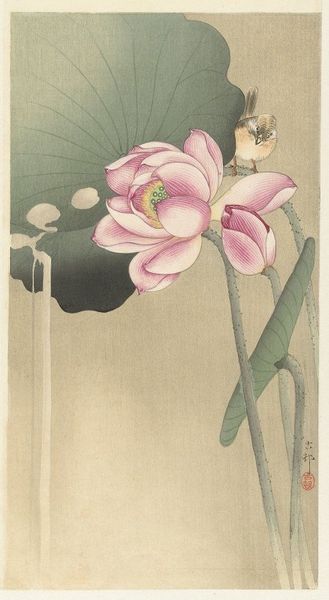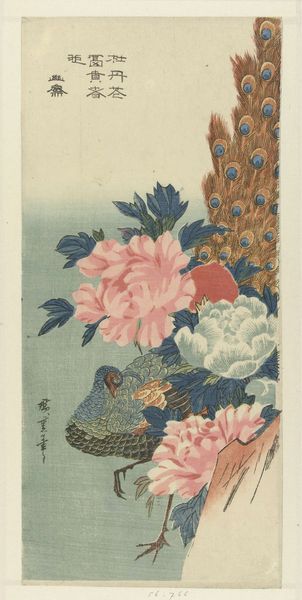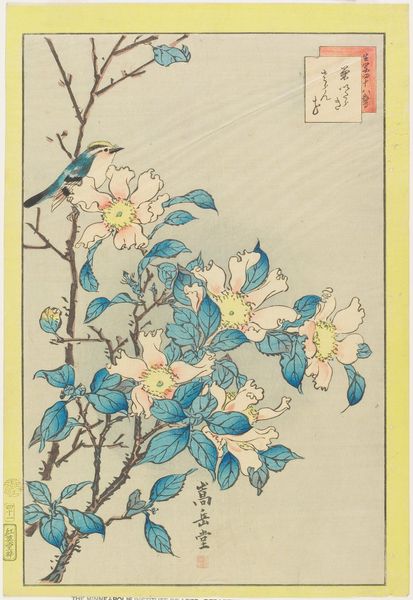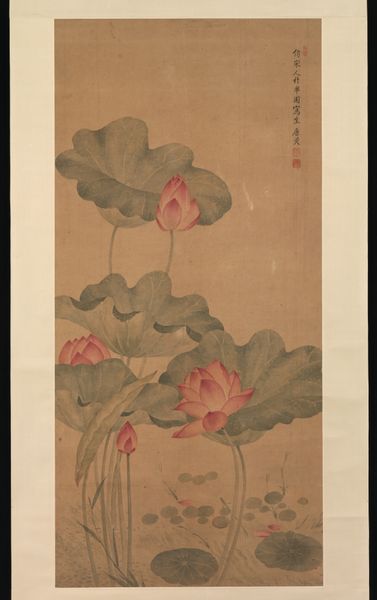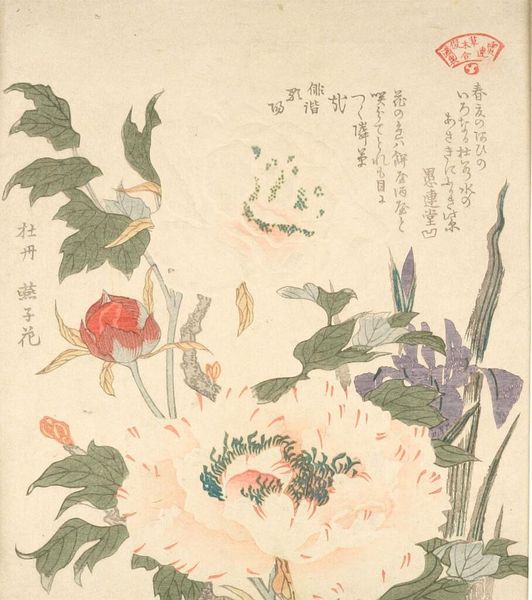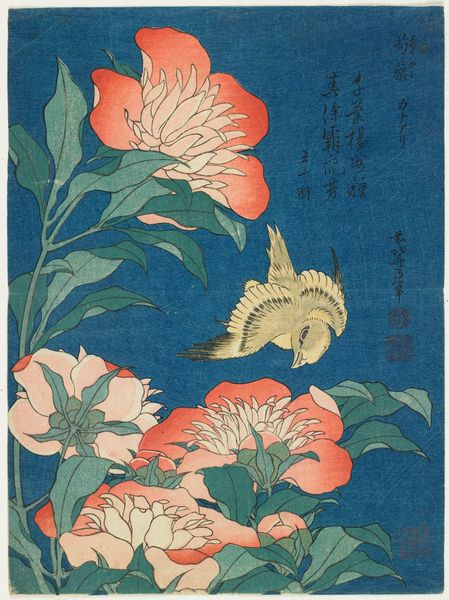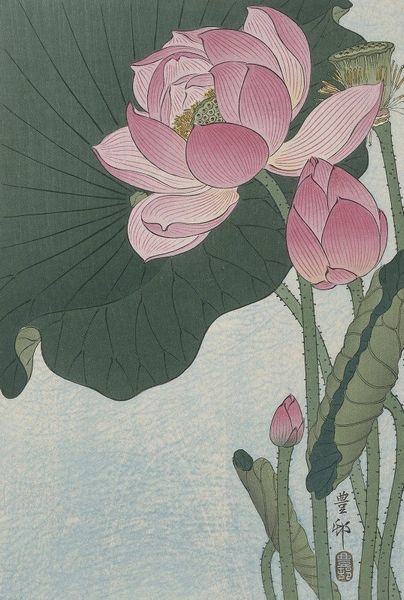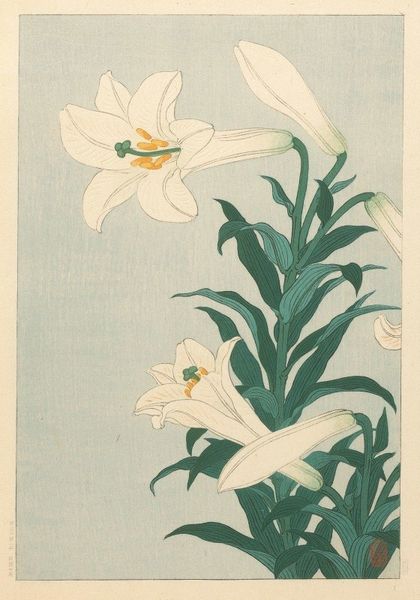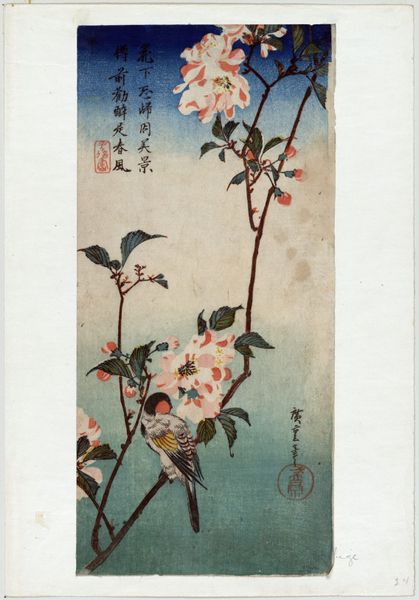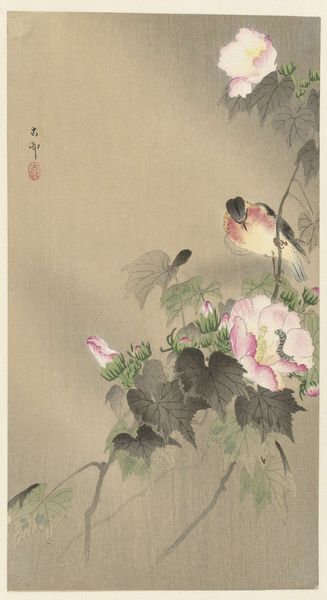
Dimensions: height 377 mm, width 241 mm
Copyright: Rijks Museum: Open Domain
Editor: So, here we have Ohara Koson’s "Flowering Water Lily," made sometime between 1920 and 1930. It's a woodblock print on paper, and I find it quite serene, almost dreamlike. What stands out to you when you look at this piece? Curator: I’m drawn to how Koson uses the water lily. Across many cultures, the lotus, or water lily, is deeply symbolic. Think of its roots in muddy waters and how it emerges, pristine, towards the light. It’s a powerful symbol of purity, rebirth, and spiritual awakening, right? Does that reading change how you perceive the ‘serenity’ you mentioned? Editor: It does! I was only looking at the pretty pink flowers, but knowing that gives it a whole new depth. The idea of emerging from something dark into light is much more compelling. So the flower isn't just a flower... it's a…message? Curator: Exactly. It's about transformation. Consider how the ukiyo-e tradition, even as it depicts everyday scenes, often holds these layers of meaning. The composition itself guides our eye upward, doesn't it? Towards the blooming flowers from the leaves below the surface? Editor: I see that now. It’s like a visual story. The buds, the leaves and the fully opened flower… it's a life cycle laid out. Do you think people viewing this at the time period would have interpreted it differently? Curator: It's likely they would have recognized the lotus symbolism instantly, given the prevalence of Buddhist imagery. What do you take away now, understanding both its serenity and its symbolism? Editor: It feels less like a pretty picture and more like a reminder of potential. Even within the most muddled circumstances, beauty can emerge. I hadn't considered the spiritual depth a seemingly simple image could possess. Curator: And that's the enduring power of visual symbols, isn't it?
Comments
No comments
Be the first to comment and join the conversation on the ultimate creative platform.
